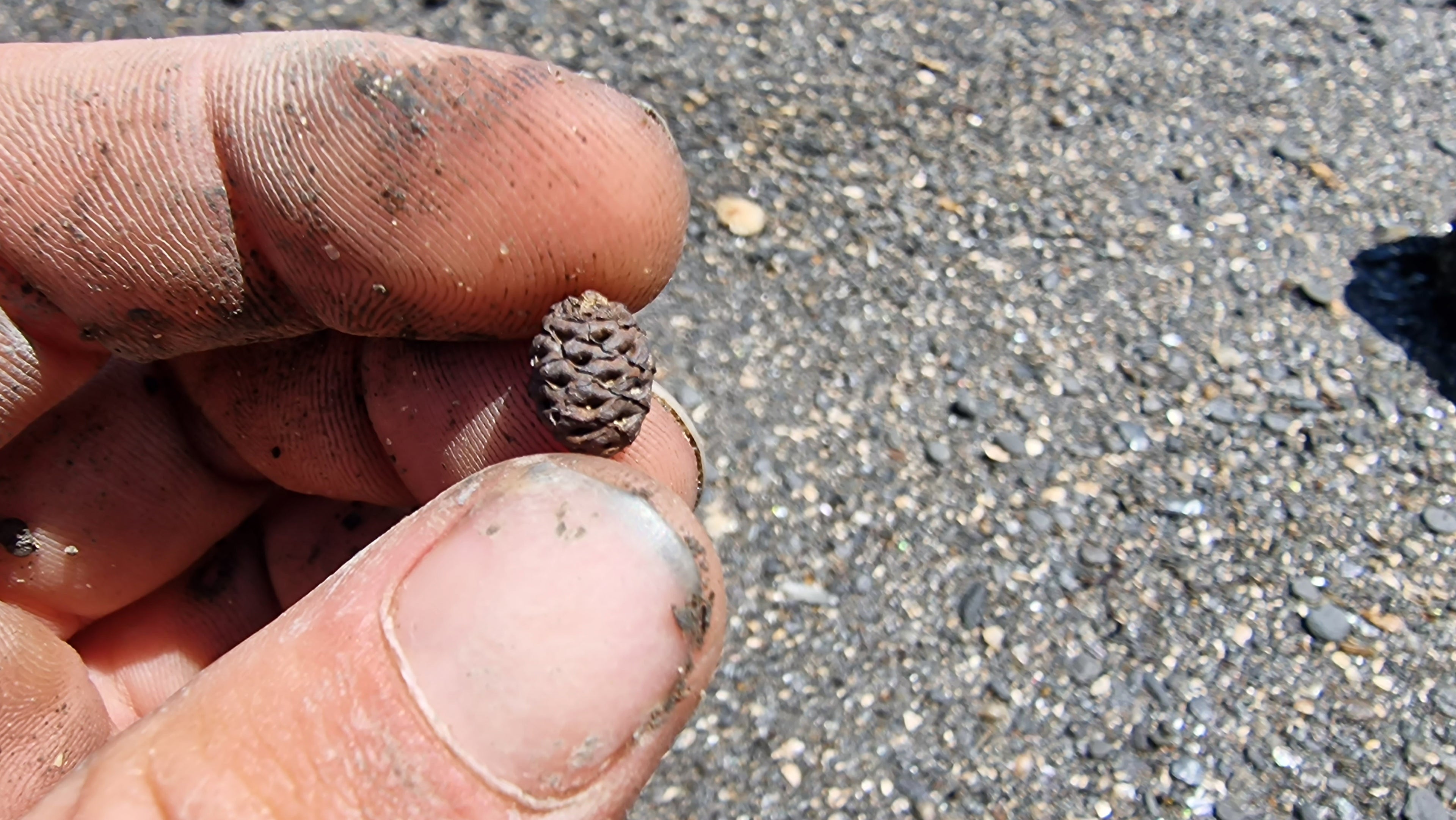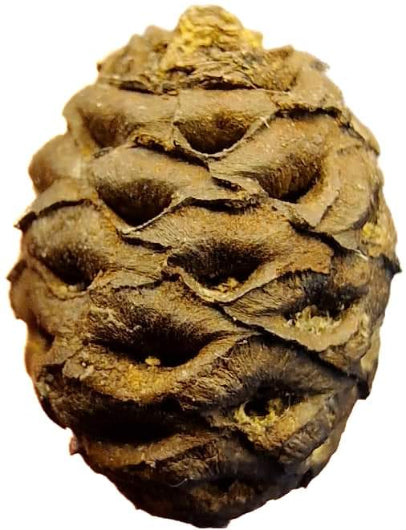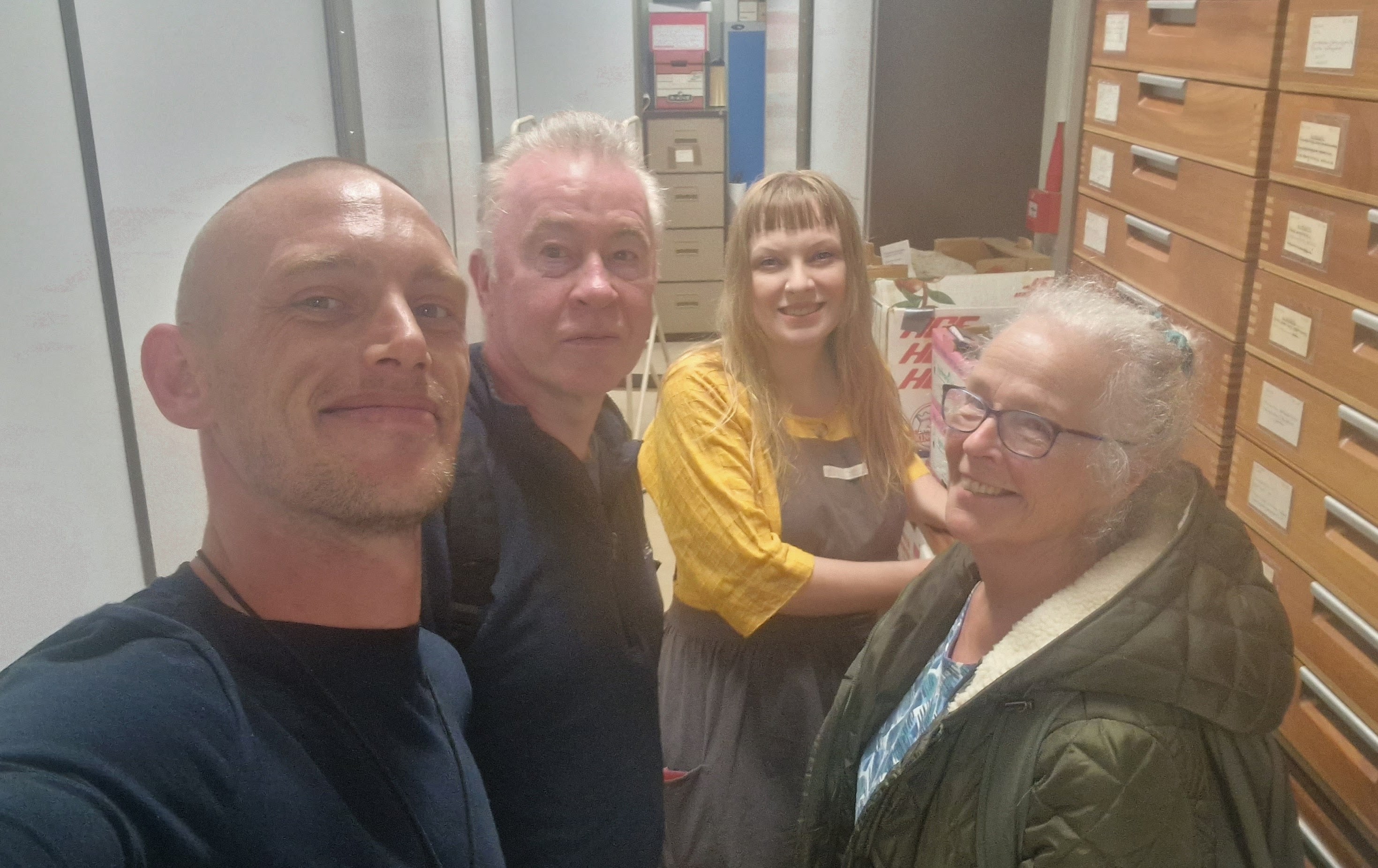
Late Jurassic Conifer Cone
-
One of the most exciting things I’ve found is this exceptionally well-preserved Late Kimmeridgian conifer cone. A rare and scientifically valuable specimen, it’s now part of the Natural History Museum’s permanent collection. Discovered during careful fieldwork in the Kimmeridge Clay, it offers remarkable insight into Jurassic plant life. Finds like this highlight the importance of responsible collecting and detailed documentation, helping to build a clearer picture of ancient ecosystems.
-

Internal structures clearly visible
This Kimmeridgian conifer cone looked phenomenal in the CT scanner. It’s now in the NHM collection, awaiting results that could reveal extraordinary internal detail.
-

Very exciting!
After seeing some incredible detail, we're really looking forward to receiving the promised CT image copy.
Left to right - Casey Rich, Steve Snowball, Dr Peta Hayes and Heather Middleton


More about the cone
Among the recent finds from the Kimmeridge Clay Formation, a remarkably well-preserved fossil cone stands out - possibly the earliest known example of its kind from this geological unit in the UK. Measuring just one centimetre in length, it could easily have been overlooked. Its exceptional preservation suggests a degree of pyritisation or limonitic replacement, processes often responsible for fine detail retention in plant fossils from anoxic marine sediments like the Kimmeridge Clay.
This tiny cone likely belongs to one of two extinct conifer families: Araucariaceae or Cheirolepidiaceae - both common in Mesozoic floras, though Cheirolepidiaceae are more typical in Jurassic marine settings. These conifers were adapted to warm, seasonally dry climates and are often recognised in the fossil record by their distinctive cones and foliage.
Immediately upon discovery, the specimen was CT scanned at the Natural History Museum to investigate its internal structure. The goal was to determine whether ovules (seeds) were still preserved within, which could significantly aid in narrowing down its taxonomic placement. High-resolution imaging is particularly useful at this scale, revealing minute anatomical features that are invisible externally.
Nearby, fossil conifer stems have also been recovered. Under binocular microscope, they reveal preserved cuticle and surface detail, including possible stomatal structures. NHM palaeobotanist Dr. Peta Hayes was able to discern individual plant cells - an unusually fine level of preservation in material of this age. These stems are currently assigned to the form genus Brachyphyllum, often used as a ‘wastebasket taxon’ for Jurassic conifer foliage when precise identification is uncertain.
Together, these finds not only contribute to our understanding of conifer diversity during the Late Jurassic but also highlight the exceptional preservation potential of the Kimmeridge Clay in rare conditions.

